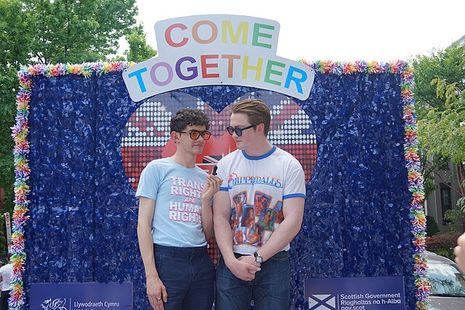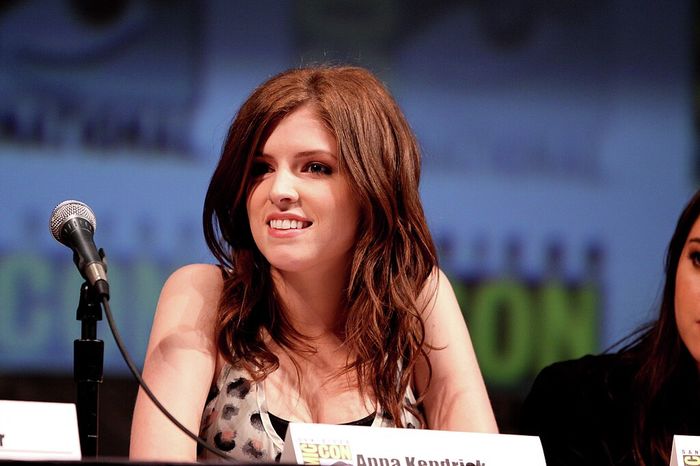Compulsive heterosexuality: Heartstopper Season 3
Ellie Smith argues that Heartstopper Season 3 is radically representative of bisexuality and queerness in women

From its younger sickly sweetness to its gritty reality, Heartstopper has maintained its signature innocence, even in its maturation. Released a month ago, season 3 has taken the world by storm, as it has done every year since 2022. Unlike the first two seasons, the shows most vocal theme isn’t Nick (Kit Connor) and Charlie’s (Joe Locke) status as an androcentric teenage gay couple — but instead the season offers a panoptic aerial view of numerous queer experiences, emphasis scattered across the diverse cast. As a cis, bisexual woman who didn’t come out until starting first year, Sahar (Leila Kahn) and Imogen’s (Rhea Norwood) romantically teetering relationship spoke personal volumes about imperfect queerness through misread bisexuality and heteronormativity.
“Imogen has fulfilled a ‘straight’ stereotype, often dating someone, and always unhappy as a result”
At the end of season 2, Sahar is playing the guitar at the prom, and Imogen gazes up at her, lovestruck. The online discourse surrounding this scene when it aired a year ago, especially on TikTok, consisted of most viewers eagerly awaiting a relationship plotline in season 3. But what we got in season 3 is vastly different to what was expected. Imogen, the only straight and cis girl of the central group, and the token self-professed “ally”, drunkenly makes out with Sahar at a Halloween party in season 3 episode 4, entitled ‘Journey’. She proceeds to joke around afterwards, laughing at the camera, and not responding when Sahar asked her if the kiss was just a joke to her. Ironically, Imogen is simultaneously dressed as Stereotypical Barbie from 2023’s Barbie — the token symbol of corporeal heteronormativity. Imogen’s character arc in season 3 doesn’t have a definitive ending, she reveals that she isn’t sure if she’s “ever even liked a boy”, and that the attention that she got from heterosexuality made her feel “important”, and as if she was “doing life right”. She confesses all of this to Nick in episode 8 of season 3; when she asks Nick “who even am I?”, he responds with ‘You’re my friend’.
Throughout all 3 seasons Imogen has fulfilled a ‘straight’ stereotype, often dating someone, and always unhappy as a result, to the extent that under the definition of ‘Comphet’ in the Urban Dictionary, there should just be a photo of Imogen. But what she does have, if not sexual and romantic clarity, is a lovingly platonic support system, who will help her uncover an identity comphet has hidden from her. However, this uncovering cannot arise from “toxic” experimentation with an openly bisexual friend — and it’s Imogen’s realization of this which acts as the pinnacle of her character’s growth. This isn’t a show just about androcentric queer romance, but also about the importance of feminine and platonic reassurance in romantic absence.
“failed romance… something very normal and very real in most teenagers: queer or not, any gender”
Sahar is the only other (openly) bisexual character in the show, alongside Nick Nelson. She nonchalantly tells Imogen this in season 2 at Elle’s (Yasmin Finney) art gallery opening, when Imogen assumes she’s straight. It’s important to note that these two girls have been friends since childhood, so a foundation of comfortability between them has already been established without the need for elaboration — the most suitable pairing for this storyline.
Halfway through season 3, Sahar reveals to Imogen that she was the reason she discovered she was bisexual in the first place, and doesn’t want to be the object of Imogen’s experiment. This leads to yet another kiss between the two — probably one bred out of Imogen’s love of attention, displaced from men to a woman — and eventually, a platonic agreement between the two to just stay friends. I think it’s safe to assume Sahar hasn’t had any experience with a girl, and it’s a common occurrence for someone bisexual (at least, from my own experience) to feel the need for their sexuality to be validated. Perhaps that’s why she still let Imogen kiss her at the New Years Eve party. However, during band practice, when quizzed about the song she has written, and whether it’s about Imogen, she explains, “just because we kissed, doesn’t mean we have found the one, like you guys have.” This feels quite self-referential to the sickly sweetness the show embraces in general — Sahar confidently counteracts this, addressing the audience as much as she is the other characters. In a show full of romantic success stories, toying with the idea of a homosexual relationship, and then having it fall short of romance, is something I feel the show needed; this being one of the many examples of the new, mature, and realistic approaches Heartstopper season 3 has taken. So, maybe we shouldn’t be making TikTok edits of Sahar and Imogen to Chappell Roan’s ‘Good Luck Babe’ (numerous of which have been surfacing on social media), as this demonizes failed romance, despite it being something very normal and very real in most teenagers: queer or not, any gender.
Both Imogen and Sahar’s storylines are open for exploration in season 4 (which has not yet been confirmed, but let’s keep our fingers crossed). Personally, I don’t want to see them as a couple, I think it would erase the strides the show has made in season 3, which is away from the softly blue lighted ostracization of gay white men, and towards the pink, purple and blue lighting of validated feminine identity.
 Music / The pipes are calling: the life of a Cambridge Organ Scholar25 April 2025
Music / The pipes are calling: the life of a Cambridge Organ Scholar25 April 2025 News / Candidates clash over Chancellorship25 April 2025
News / Candidates clash over Chancellorship25 April 2025 Interviews / Dr Ally Louks on going viral for all the wrong reasons25 April 2025
Interviews / Dr Ally Louks on going viral for all the wrong reasons25 April 2025 News / Cambridge professor paid over $1 million for FBI intel since 199125 April 2025
News / Cambridge professor paid over $1 million for FBI intel since 199125 April 2025 Comment / Cambridge builds up the housing crisis25 April 2025
Comment / Cambridge builds up the housing crisis25 April 2025






